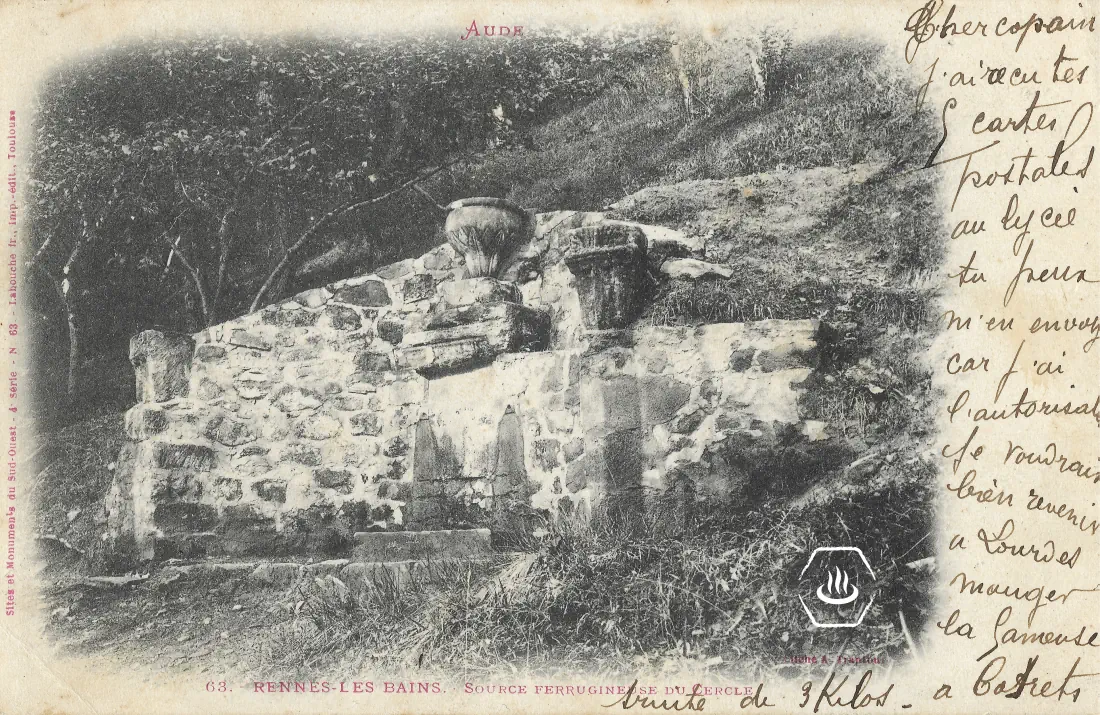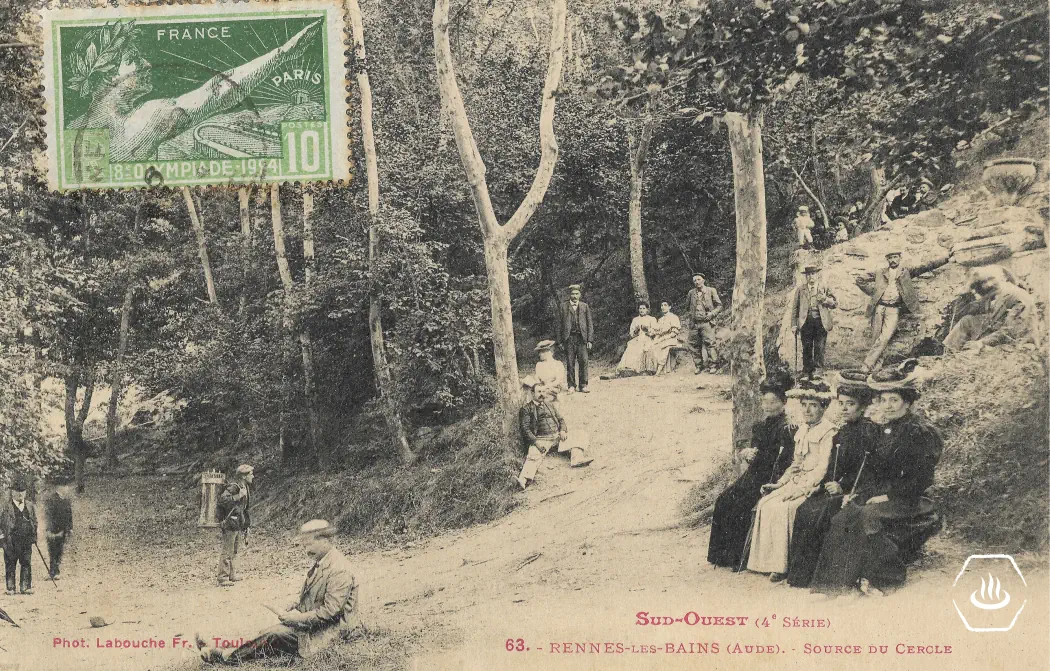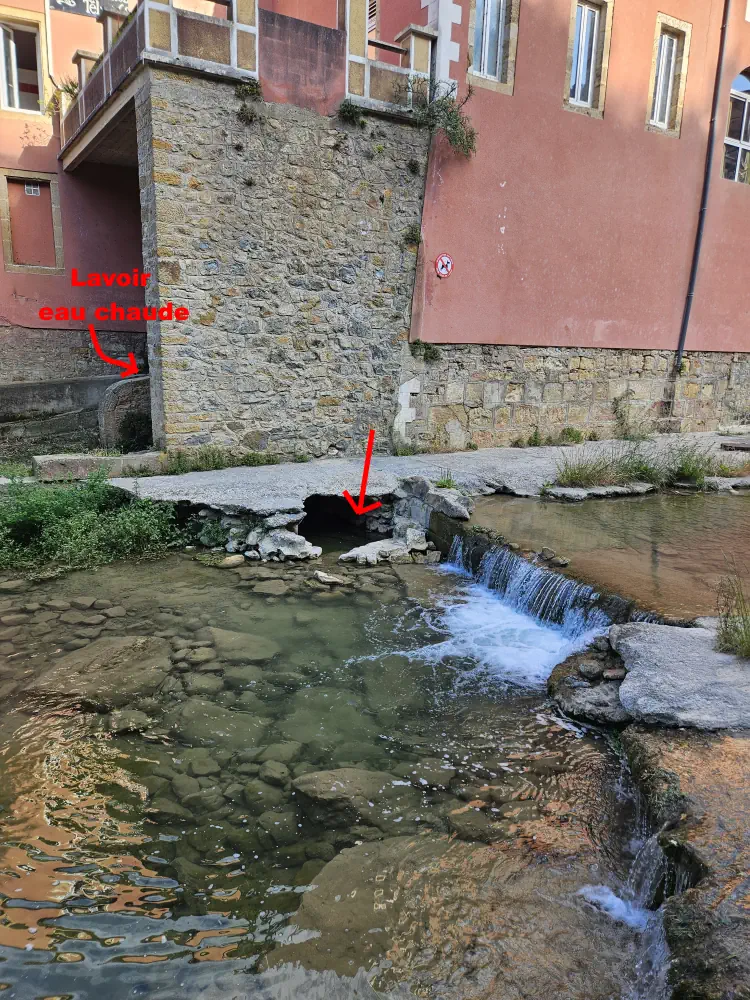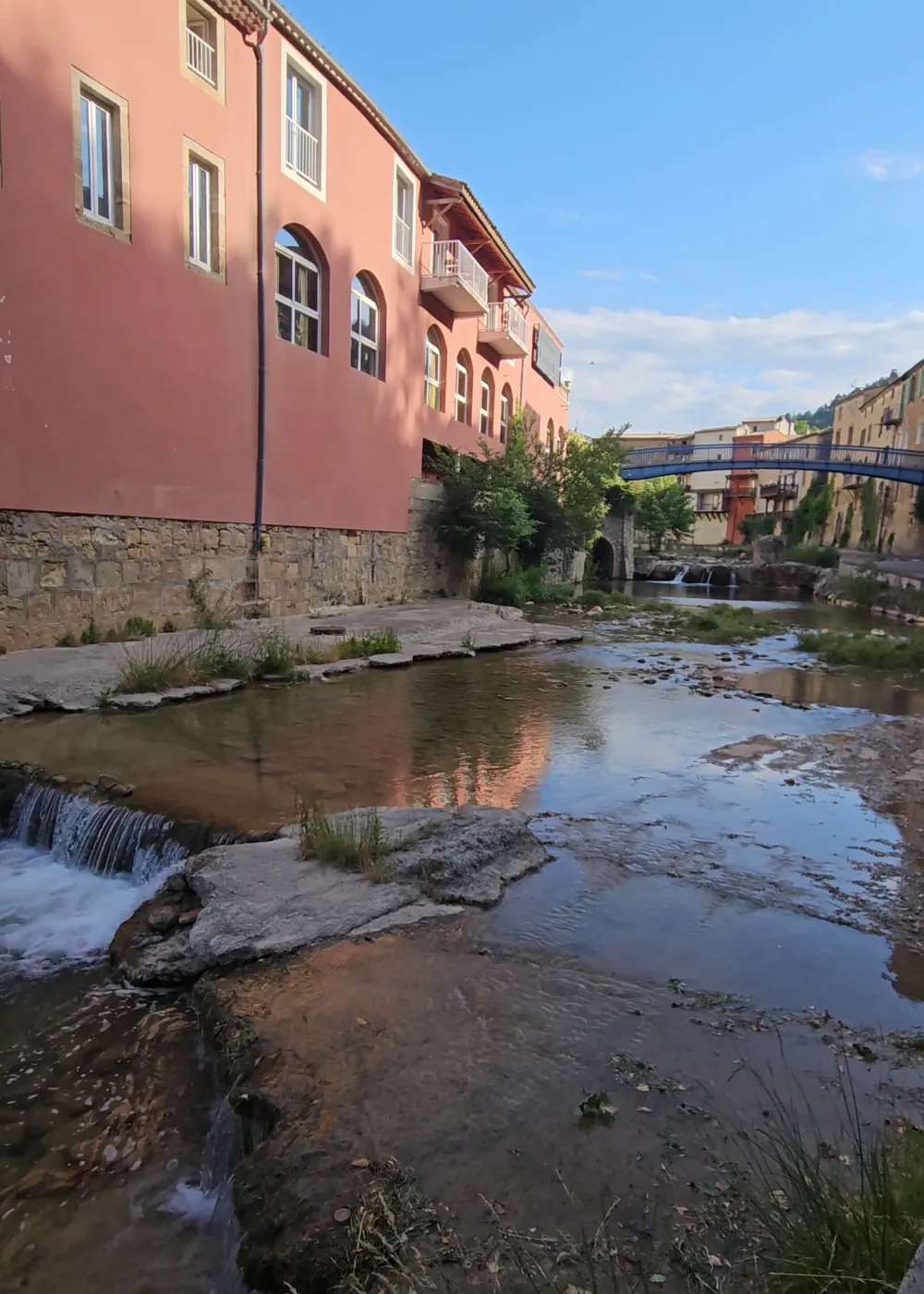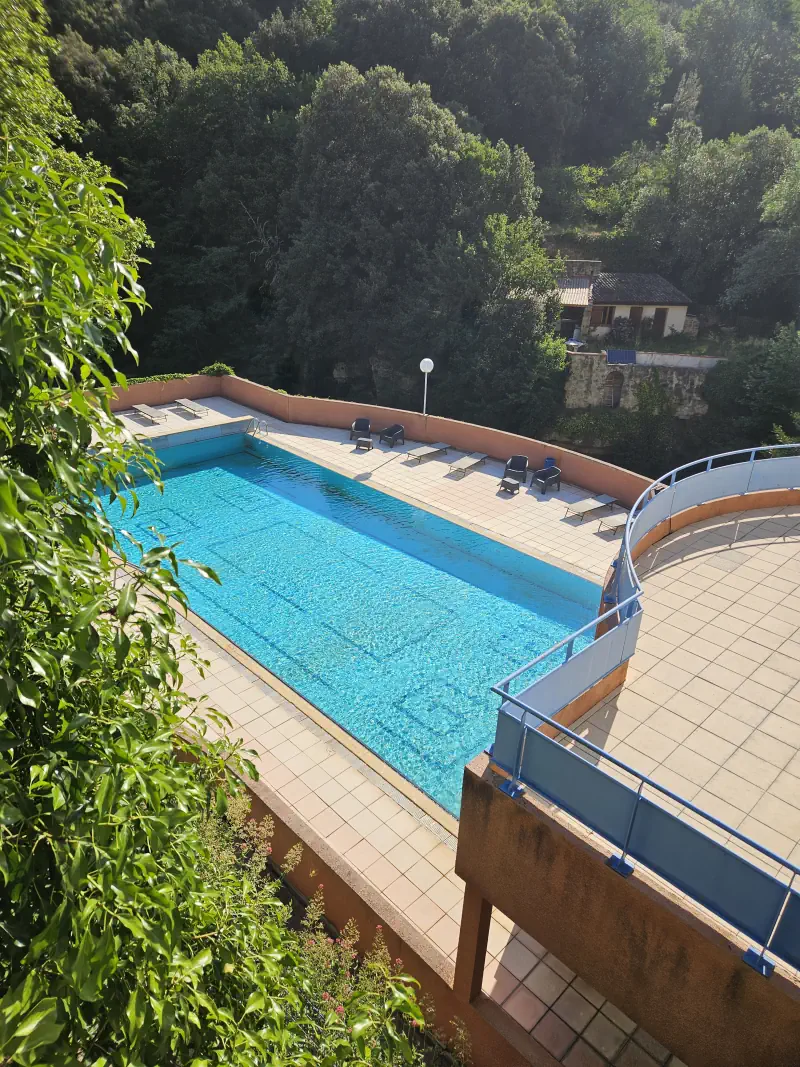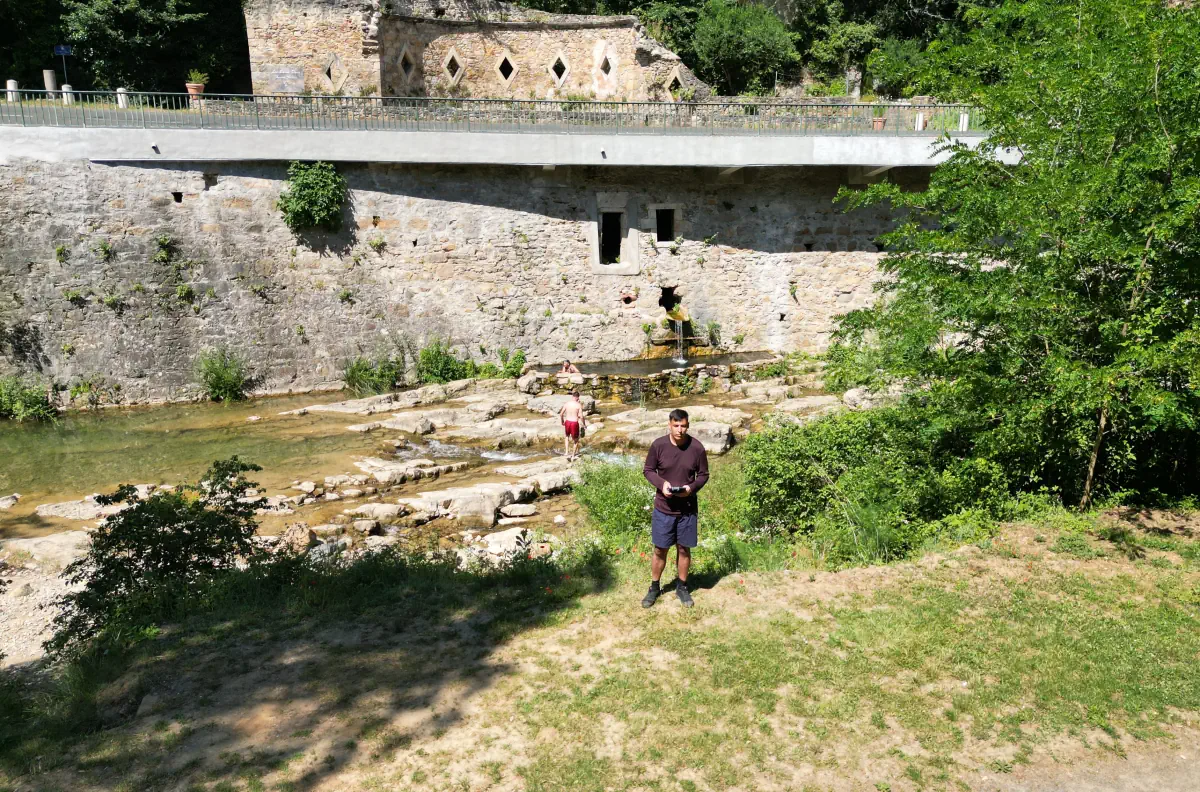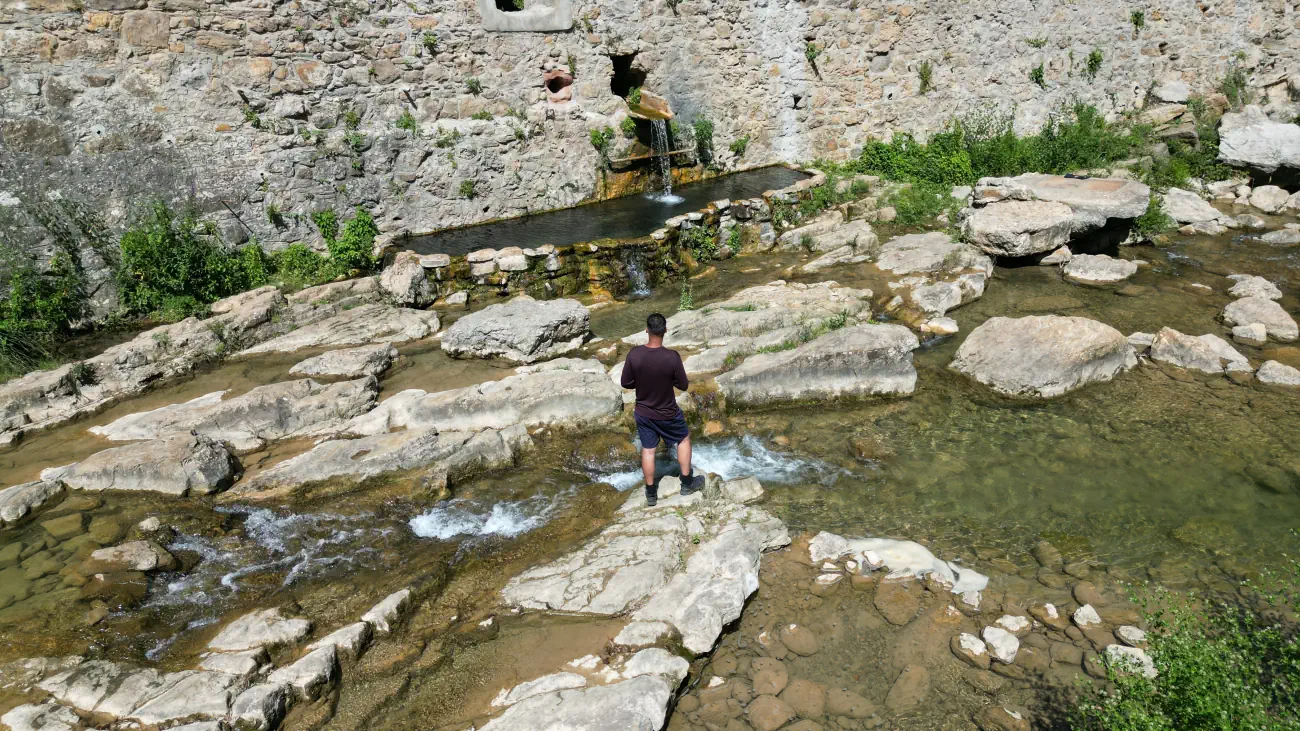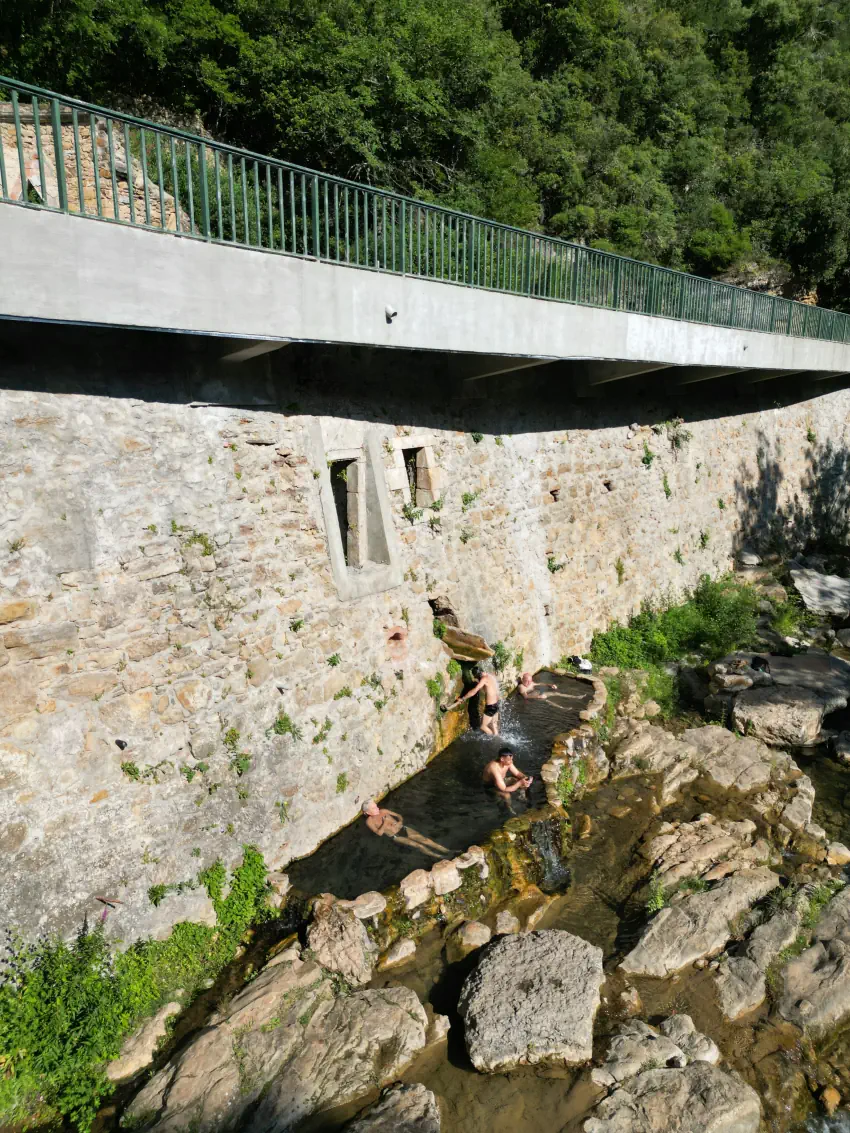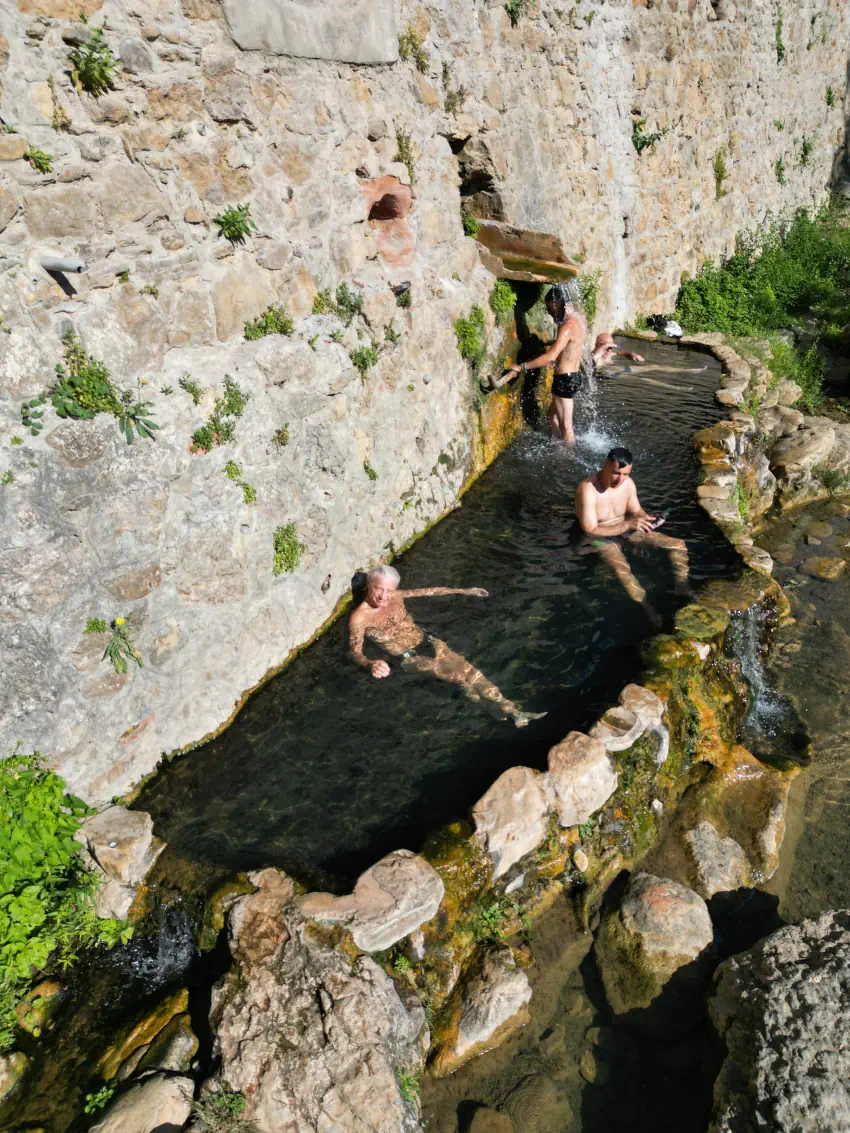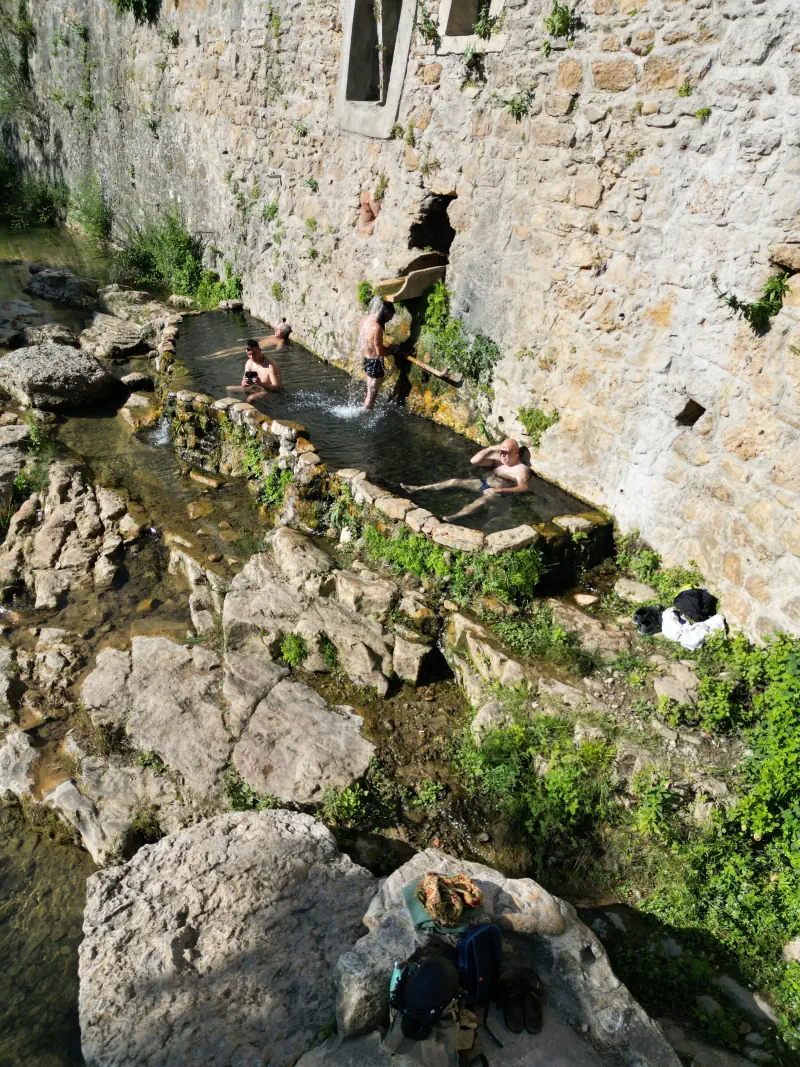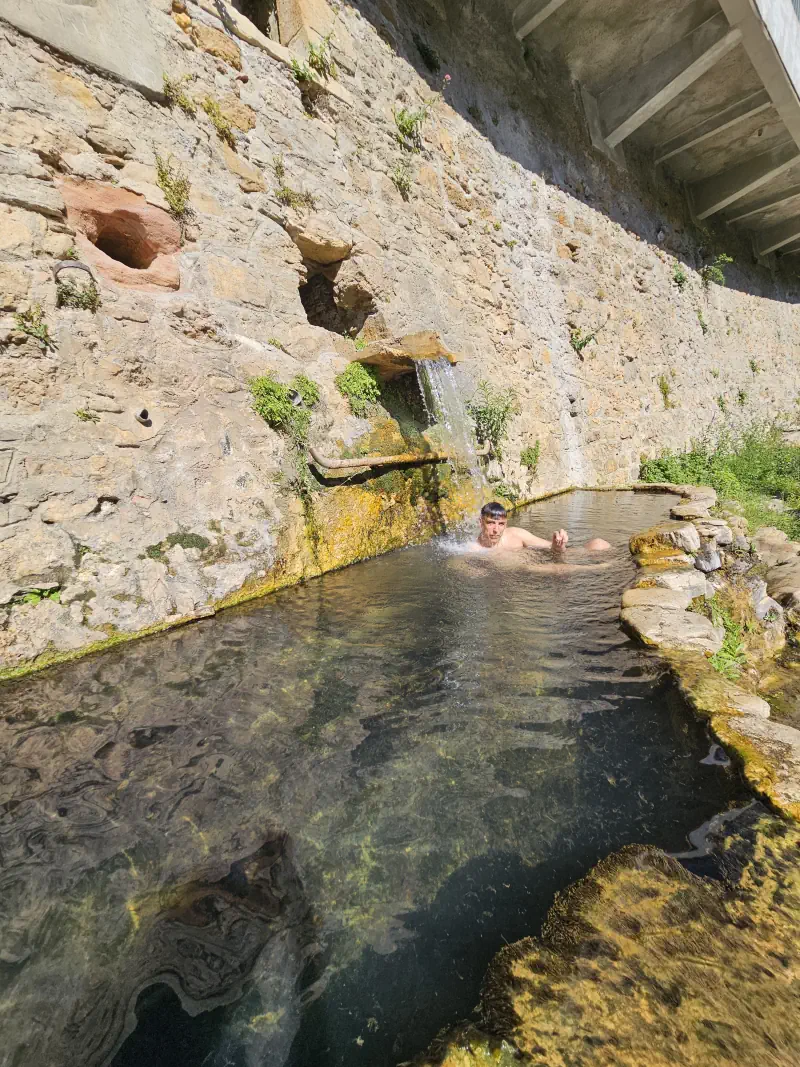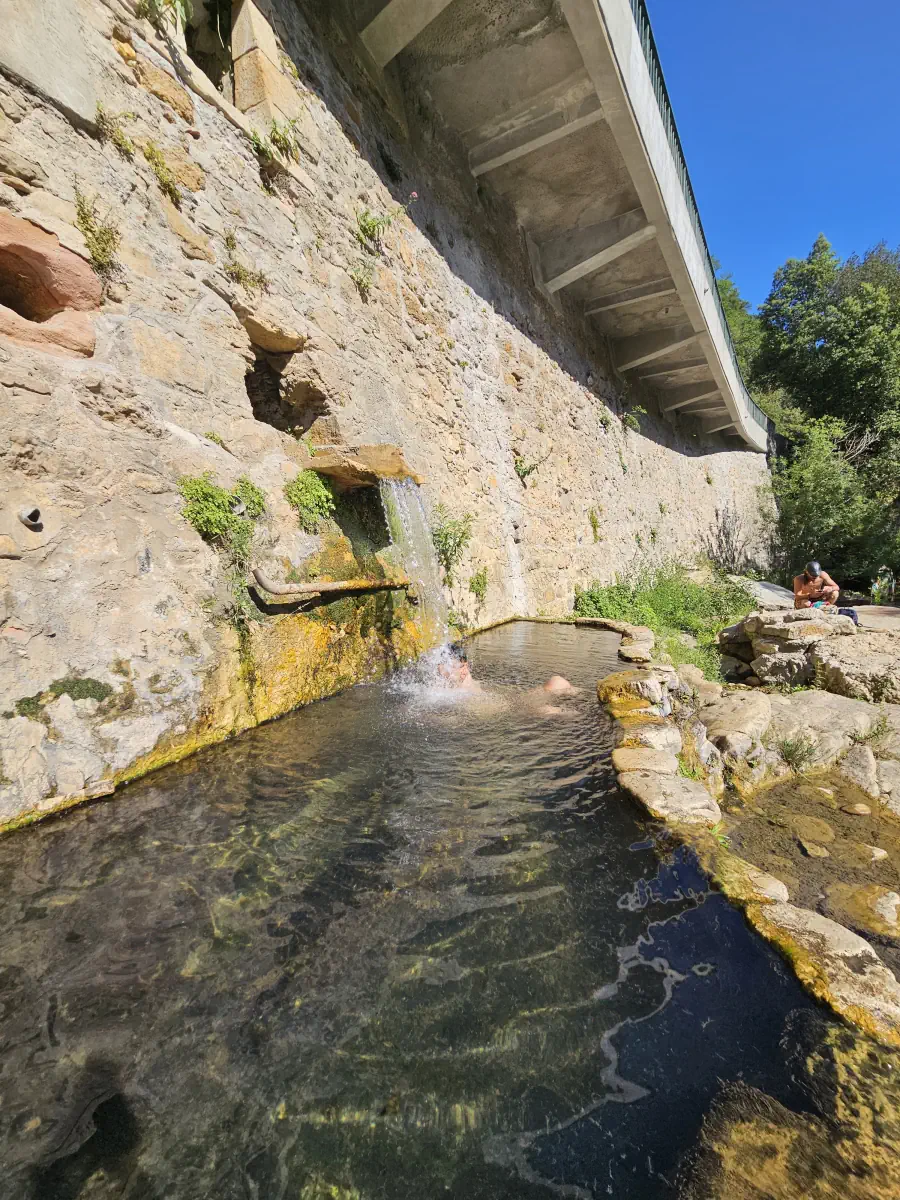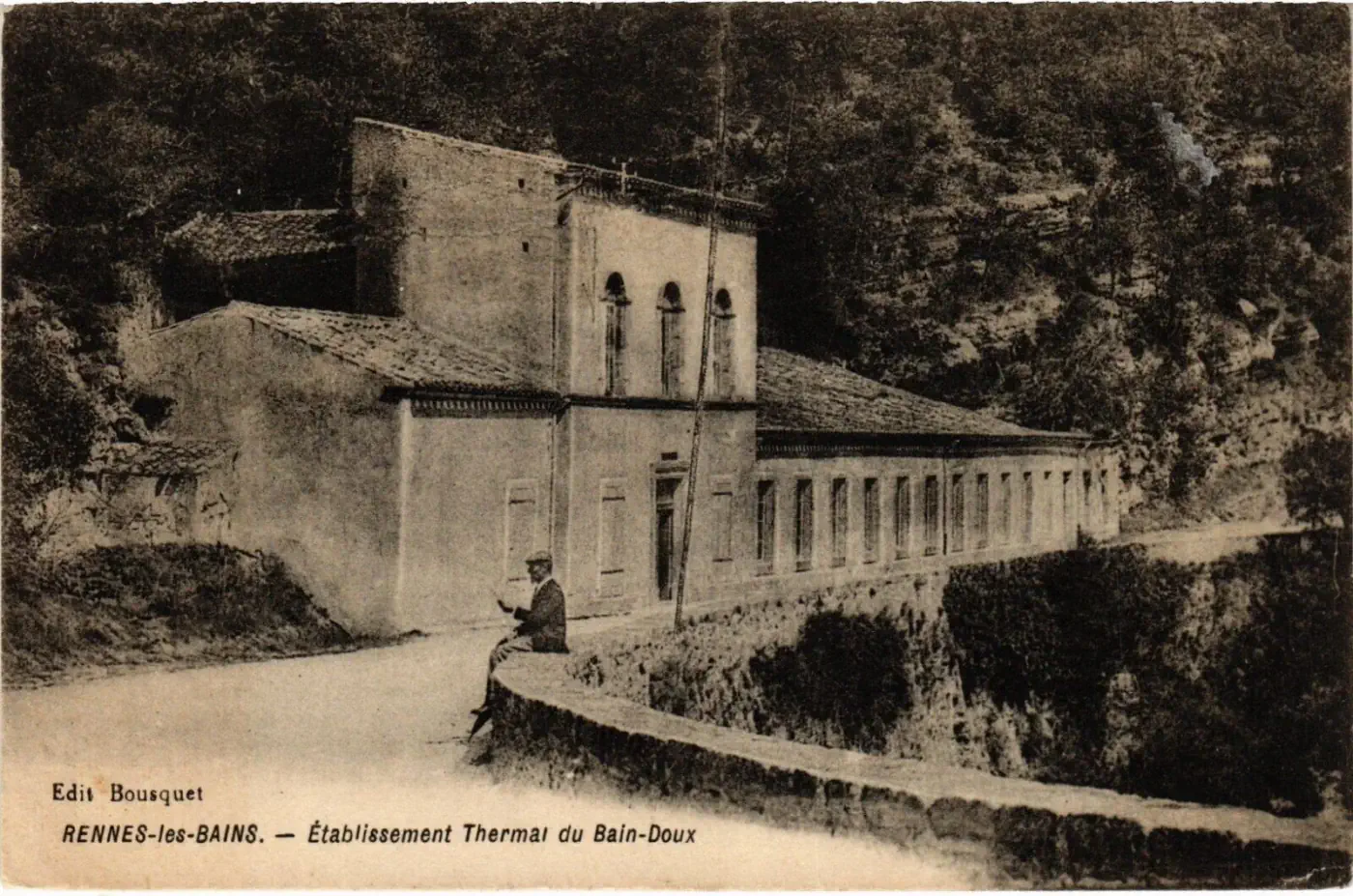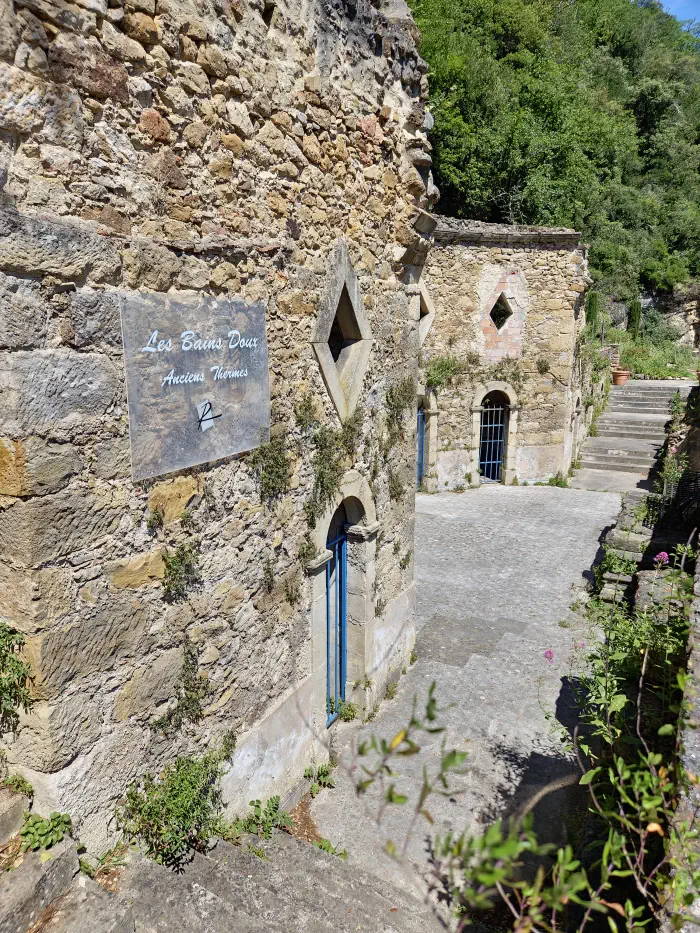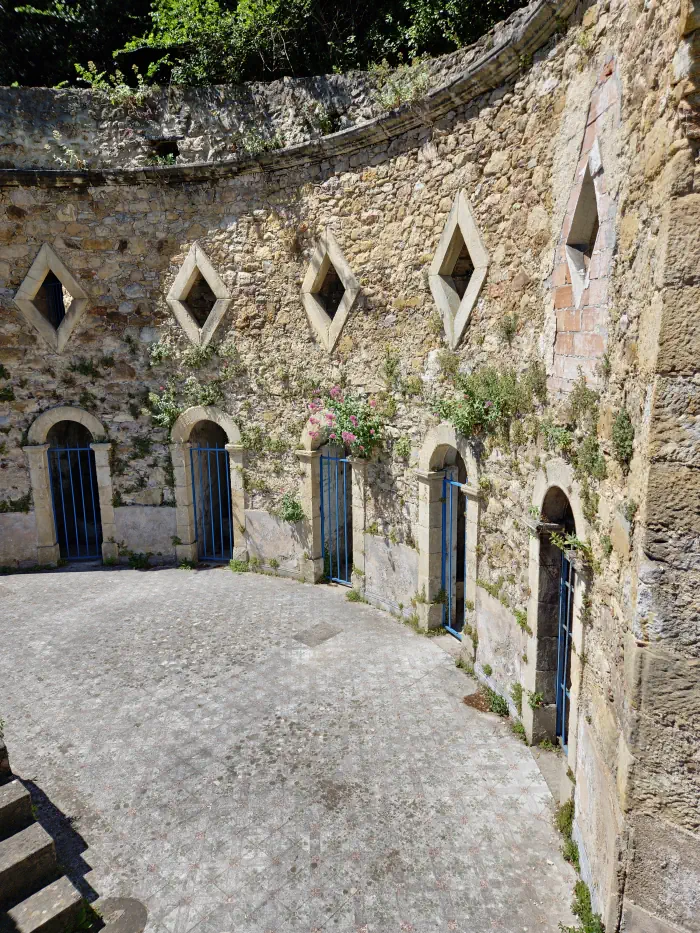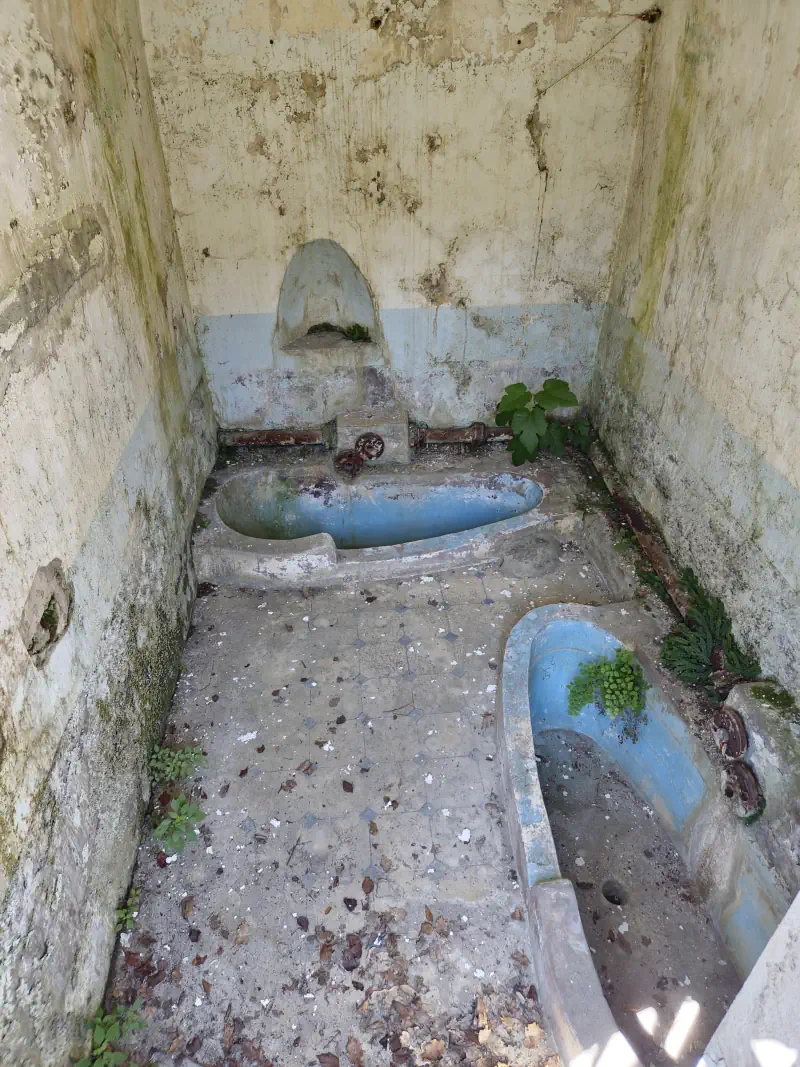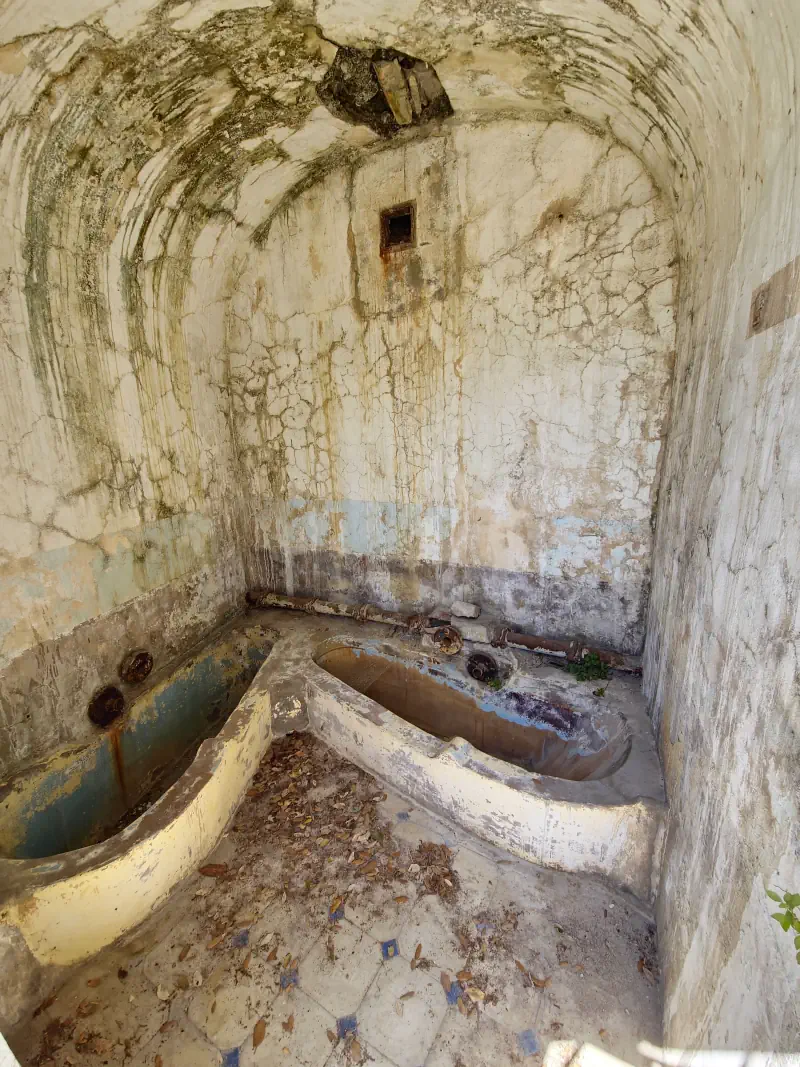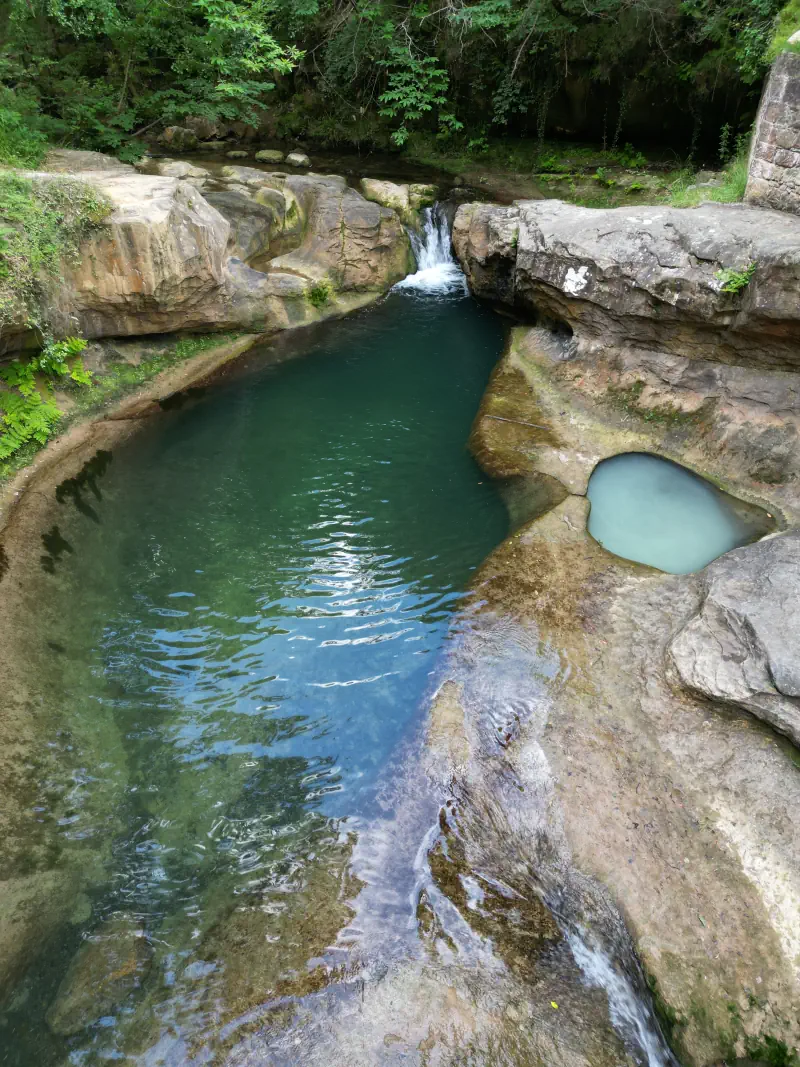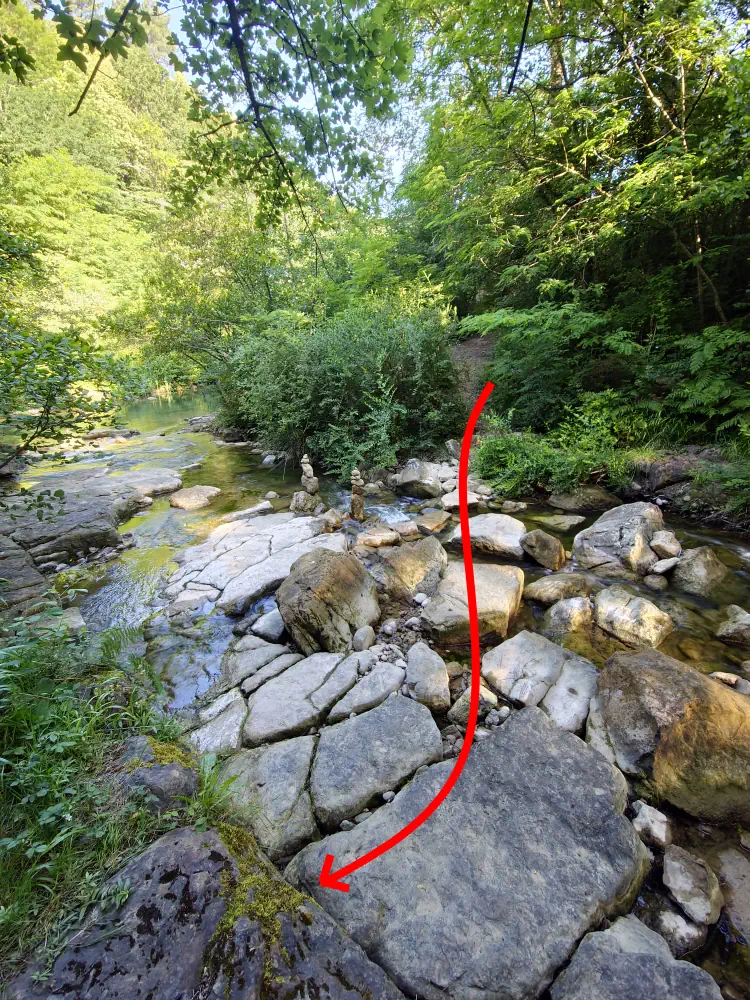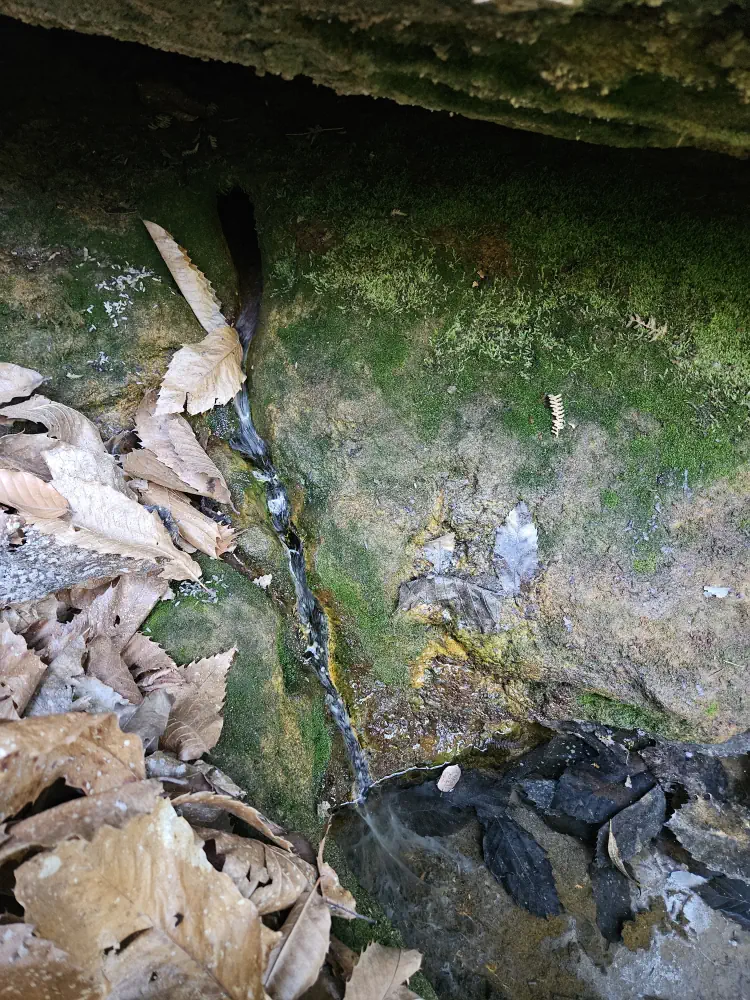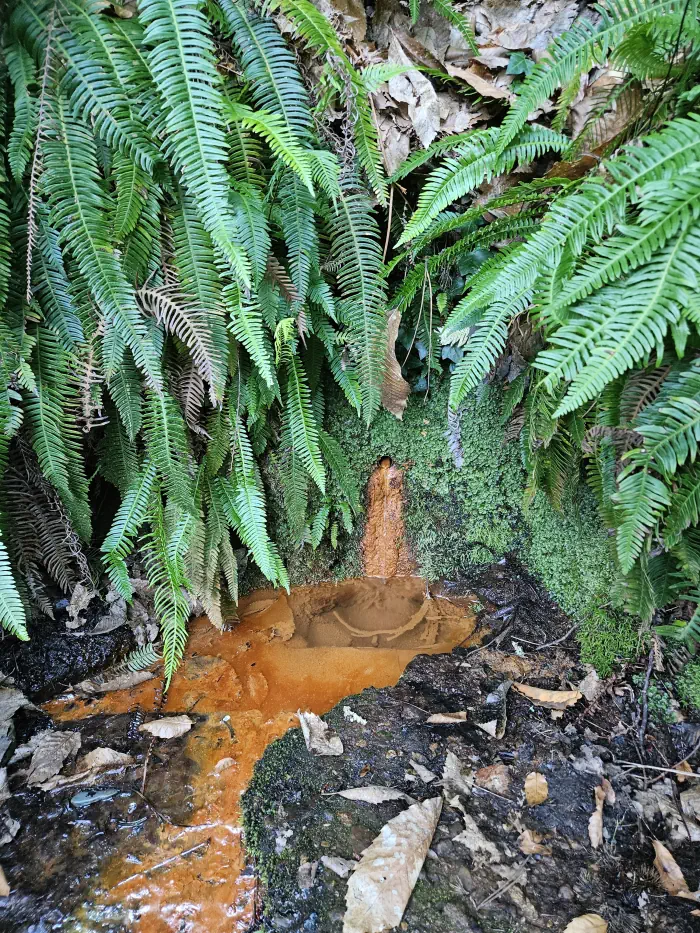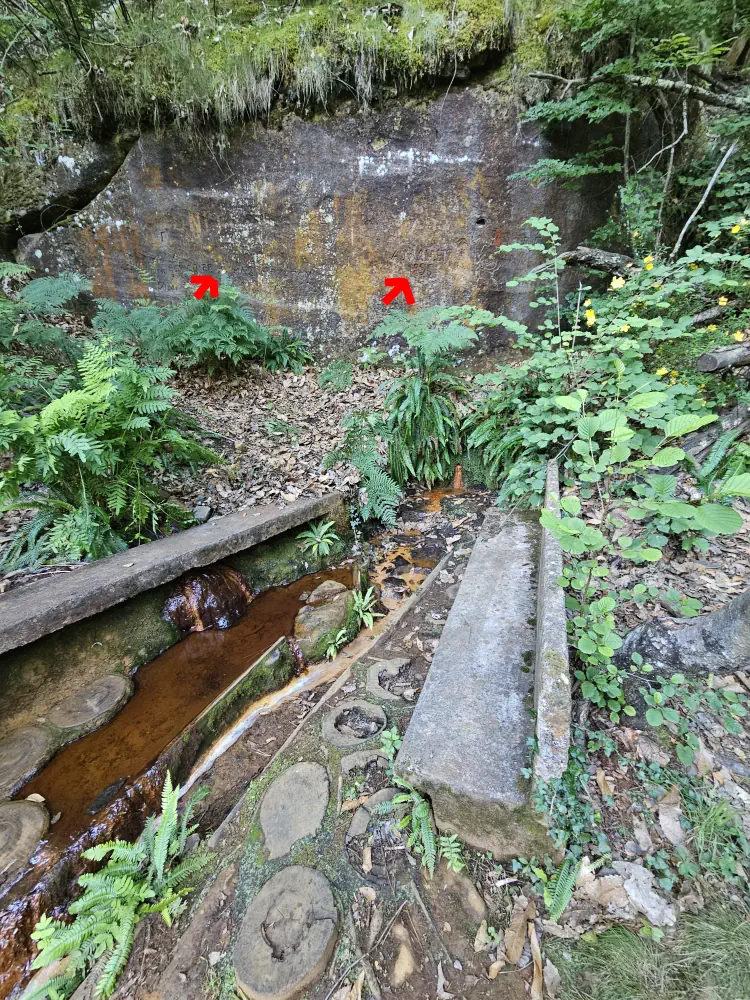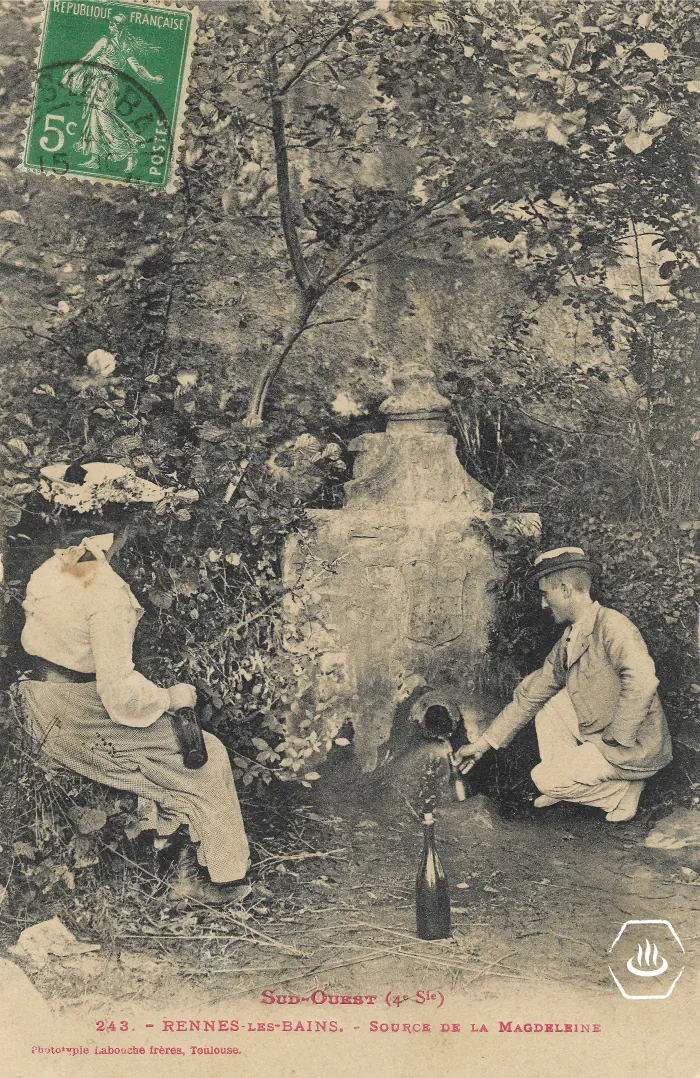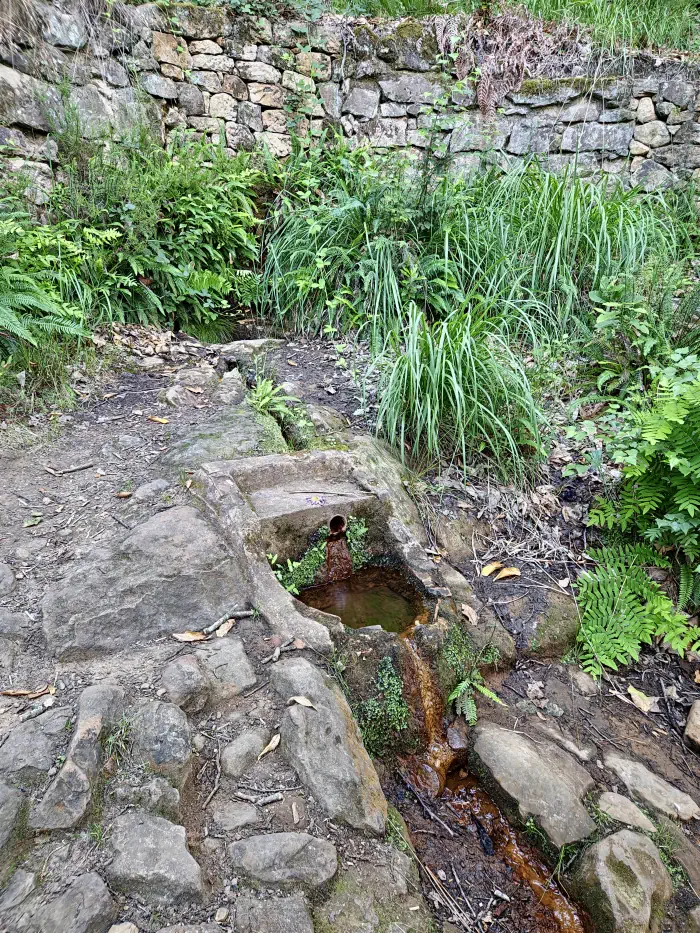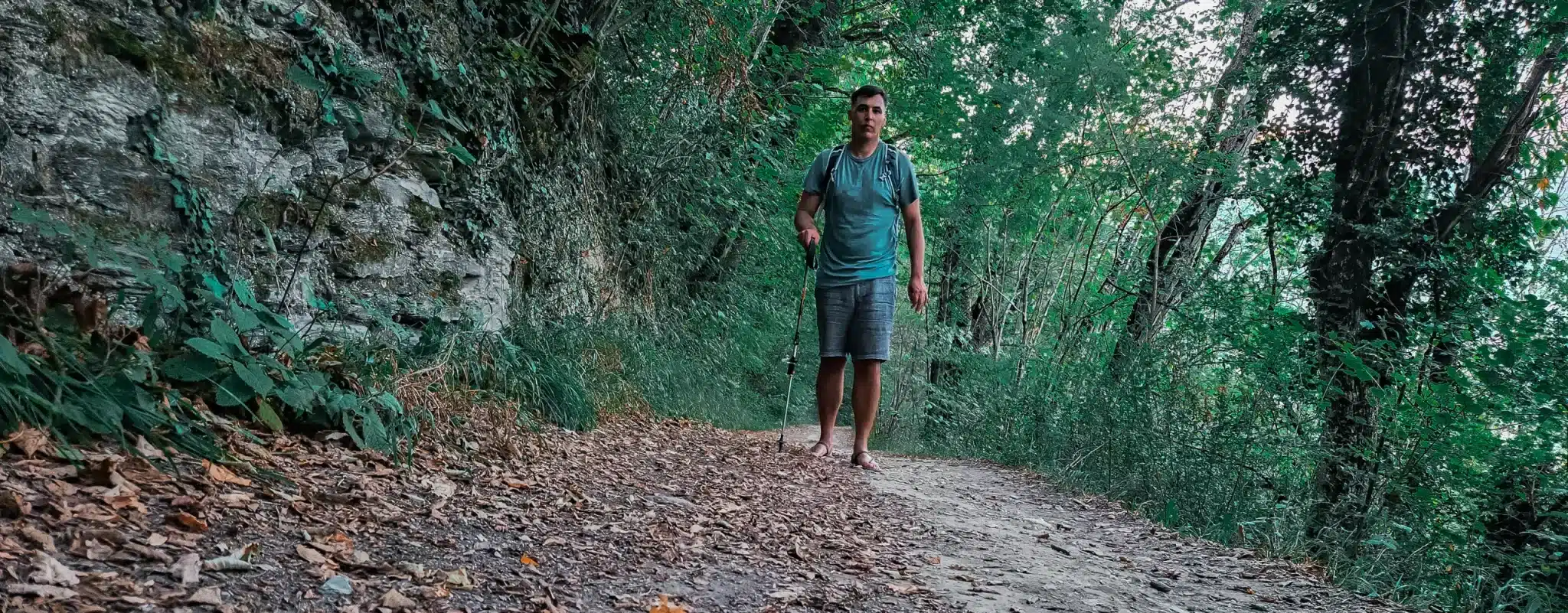Visit Rennes-les-Bains, France | Hot springs and healing fountains
- Nature Source Chaude
- Published on
- Updated on 25 May 2025
The history of Rennes-les-Bains, the only spa resort still operating in the Aude department, dates back to ancient times. The Romans were already aware of the benefits of its waters.
Old pipes and a sophisticated water distribution network have been unearthed alongside numerous artefacts and remains. 2,000 years ago or more, people lived and roamed around Rennes-les-Bains (formerly known as Rhedae). The site was already a place of relaxation and rejuvenation.
The same was true of French thermalism in the mid-19th century, which remained highly prosperous. During this period, the resort attracted 5,000 visitors per year — a figure that has since declined to just 1,000.
The springs used by the station have been heavily exploited, with particular attention paid to their capture and development. Over time, the old springs have gradually been replaced by the current ones, which has resulted in changes to the intrinsic quality of the water.
However, one of them, the source des Bains Doux (Gentle Baths spring), is no longer in use. It has been turned into free baths that are accessible all year round.
You will also discover that the village is home to cold mineral springs that were once enjoyed by drinkers.
Table of Contents
Map of hot springs and fountains in Rennes-les-Bains and the surrounding area.
🗺️ Near the thermal baths of Rennes-les-Bains, discover on the map:
– the source des Eaux Chaudes in Alet-les-Bains (former spa resort).
– the source de la Fountaine in Campagne-les-Bains (former spa resort).
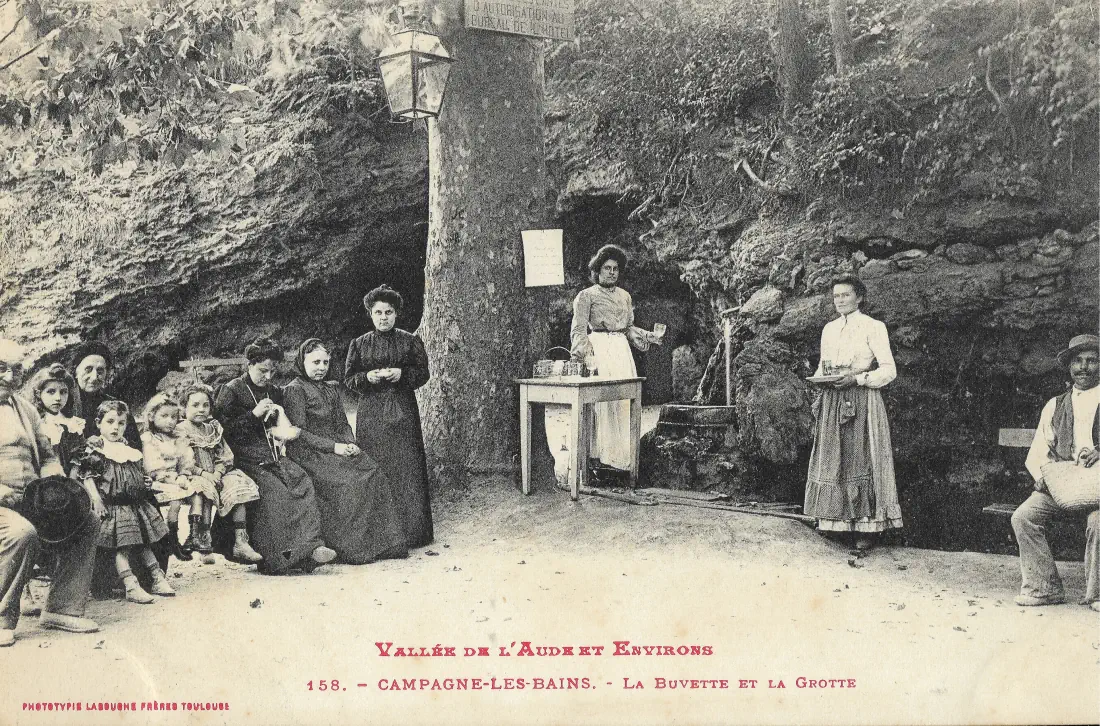
Source des Bains Forts
The Source des Bains Forts (Strong Baths spring) is the hottest spring in the resort (among the five thermal springs), with a temperature ranging from 41 to 47 degrees at the point of emergence.
It is only used during the spa season. The spring, which is tapped in the basement of a hotel (a former spa establishment) with pink walls, supplies both the spa facilities and the thermal pool, which are located less than 200 metres away.
However, the water is not used directly; rather, it heats other thermal springs (which are rather lukewarm) through geothermal energy.
But when the town remains dormant until April (as is the case for most spa towns), these waters end up in the river.
A staircase at the back of the Hostellerie hotel takes you through a small gallery to the base of the building. Here, you will find the old village wash house, which is fed by thermal waters that then flow into the river. However, this site, which used to operate as a public bath in the winter months, has undergone several changes in recent years aimed at discouraging visitors.
It now seems that the thermal waters flow directly into the river via an opening beneath the stone slab.
I had planned to take a closer look at this wash house, but unfortunately the entrance was blocked by a locked iron gate. Perhaps it is only accessible in winter.
Bains Doux
Life in Rennes-les-Bains is sweet and simple. This seems to suit the temperament of its inhabitants. The town itself is peaceful, and there are plenty of walks through the lush, green countryside nearby.
The thermal park, the Jardins de la Reine (Queen’s Gardens), is located at the entrance to the village and is the perfect place to walk and unwind. At the far end of the park, at the end of the path, you will find a few picnic tables and a hot water pool. The pool itself, however, is located on the opposite riverbank.
To access the hot water pool, head to the front of the thermal establishment. You will see an inaccessible thermal pool below on your right. Follow the path through the park Les Jardins de la Reine to reach the natural baths. This five-minute walk offers magnificent views.
Natural baths
As you walk towards the river, you will see lots of small salmonoids swimming in the water. These freshwater fish are seemingly undisturbed by the salt in the water — hence the river’s name, the Sals.
There is also plenty of life in the water, albeit on a smaller scale, in the form of microbes. These microbes obtain the mineral salts their cells need by nibbling away at the rocks. However, as rocks evolve slowly, the ones that allow me to wade across the stream will not disappear any time soon.
These mineral salts are essential not only to the life of microbes, but also to human life and to the lives of the microbes that inhabit our bodies — our microbiota.
It should also be noted that rock dissolves more quickly into mineral salts when the water is hot.
It was once believed that combining water and heat was enough to speed up chemical reactions and dissolve rocks more quickly. But we now know that it is mainly microbes that accelerate their cellular reactions and therefore their action on rocks, thanks to the heat drawn from the water!
During their journey underground, the waters of the Source des Bains Doux (Gentle baths spring) came into contact with countless microorganisms that can be described as ‘stone miners’. However, these microorganisms perform many other functions, too.
Other micro-organisms adapted to the conditions of the medium can then develop when the waters flow into the landscaped pool.
A large quantity of thermal plankton (bacteria, algae, etc.) covers the entire rocky bottom of the pool, making it very slippery. This area receives plenty of sunlight, which encourages the growth of photosynthetic bacteria.
This thermal plankton is important because it enriches the water with active molecules (antibiotics, anti-inflammatories, fatty acids, etc.) that can penetrate the skin barrier and reach affected tissue.
The orange deposits left by water around the pool are actually complexes of more or less hardened iron oxides. Chemolithotrophic bacteria use the iron in the water to produce the energy they need to survive. This process results in the formation of more oxidised forms of iron. These orange stains are home to a wide variety of microbes.
Finally, as this beautiful thermal waterfall emerges from a strange cavity and pours directly onto the bather’s head, they receive a genuine therapeutic shower.
As well as being hygienic, this practice helps to treat localised scalp conditions and speed up the healing of skin lesions. The thermal shower complements the bath by having a mechanical effect on the skin. Once you are standing, the force of the water jet (which has natural pressure and does not alter the water) will knock you off your feet. You can hold on to the wall or a metal bar to prevent slipping.
These waters, rich in the properties of the geological layers they have passed through, are low in minerals. They are sulphated-calcic and chlorured, magnesian, ferruginous (due to traces of iron) and radioactive, and hot.
These waters have been found to have a positive impact on various conditions, including chronic rheumatism, gout, trauma and nervous disorders. Furthermore, simply soaking in warm water can provide a range of health benefits. Read the article ‘The amazing health benefits of a hot bath‘ to find out more.
The Ancient Thermal Baths
The source des Bains Doux is captured in a pool measuring 1 m² and with a depth of 1.5 m. This pool is situated on the site of the former thermal baths, which were first established in 1819 and then enlarged in 1854.
Now, the water flows by gravity through a masonry channel under the road to the freely accessible pool. Its varying flow rate suggests that it is mixing with cold water. During the low-flow period in mid-June, the water temperature rises to between 33 and 34 °C.
A hot spring should usually maintain a consistent temperature and flow rate throughout the year.
As with most primitive hot springs, the source des Bains Doux originally consisted of nothing more than a stream of hot water flowing across the ground.
Over the centuries, construction work on the building (in the 19th century) and other developments (such as rock excavation) may have affected the flow, temperature and quality of the water. As early as the 18th century, people used this water in a communal bathtub.
When you arrive at the Ancient Thermal Baths, you will need to go down some steps. Several small arched entrance doors are arranged along the main façade.
These doors lead to small rooms where people used to bathe. Each room has two bathtubs set into the floor. Built at a certain depth, the two bathtubs sometimes meet at one end.
Each bathtub was supplied with hot water via pipes and was painted.
These pipes appear to be made of lead, a metal commonly used for manufacturing water pipes and producing paint in the 19th century. Even the Romans used lead for their water collection systems, despite their advanced techniques. However, the toxic effects of lead have been recognised since ancient times and remain relevant today. Water in lead pipes becomes contaminated with lead. The longer the water remains in contact with the lead, and the hotter the water is, the more contaminated it becomes.
These small bathtubs had to be completely emptied before they could be refilled. Due to their narrowness, users had to remain almost motionless while inside, which meant they were likely to feel more tired when they emerged than when they entered.
The only light in the room came from the open front door. Steam hung in the air, further darkening the room, and streamed down the walls.
Fontaine des Amours
The Fontaine des Amours (Fountain of Love) is located on the outskirts of town, on the road to Sougraigne. At one point along this road, a path branches off to the right. Follow this path to reach the fountain, which is then within easy walking distance.
The River Sals flows into a large, natural rock basin. The basin is deep enough to enjoy a revitalising swim or soak. There is also a small, heart-shaped pool.
As you listen to the sounds of nature and insects around the water basin, you will feel as though you have stepped into a fairy tale.
The area is surrounded by lush greenery that provides shade and creates a cool atmosphere.
I found the setting really appealing because it offered the chance to cool off in the water and escape the sun’s heat. In June, the water temperature was 19°C.
It should also be noted that this river is salty. It rises at the top of a small valley located seven kilometres southeast of Rennes-les-Bains. With a sodium chloride concentration of up to 60 grams per litre, the river exhibits some interesting properties. This is twice the concentration found in the Mediterranean Sea.
The Sals grows in size during its 20-kilometre journey thanks to the fresh water it receives from the surrounding valleys.
Its mineral salt concentration therefore decreases gradually. However, the water at the Fountain of Love remains highly saline, with a sodium chloride concentration ranging from 10 to 20 grams per litre or more.
Visitors who come here to take a dip can enjoy the cold, mineral-rich water.
These complex salts have a general tonic effect, accelerating local physiological processes. Sodium also plays a vital role in cellular exchanges at an atomic level.
Therefore, these waters can alleviate rheumatism, muscle and joint problems, and nerve pain. Sodium chloride is almost always present in hot springs, including the Bains Doux spring.
Source de la Madeleine
The Source de la Madeleine (Madeleine spring) is located on the outskirts of the town. After crossing the bridge towards Sougraigne, follow the right-hand path for about 20 minutes to reach the springs.
Almost opposite the start of this short hike, on the other side of the road, you will find a car park and a path leading to the La Bernède campsite.
You can easily cross the Sals River via the stone ford. The fern-dotted path is passable all the way to the springs. It runs alongside the Blanque, a freshwater stream.
When you reach your destination, you will see a sulphurous spring just a few metres from the path. Water is flowing down a rock.
Another spring, whose water is ferruginous, flows a few metres from the first one. This spring is located at the foot of a striking rock.
The iron seepage colours the area, adding an undeniable touch of beauty in contrast to the sulphurous spring.
Known as the Madeleine Spring, it used to flow more abundantly, much to the delight of visitors.
The Madeleine Spring was a pleasant place to visit. Surrounded by woods, it was the perfect place to rest — and it still is today.
Stone benches provide visitors with a place to rest. Rock inscriptions dating back to the 19th century can still be seen today.
The locals used to drink from the fountain because its water was renowned for its health benefits. However, nowadays water is scarce and the fountain has fallen into disuse.
Source du Cercle
The Source du Cercle (Circle Spring) is accessible via a marked path located near the hamlet of the same name.
Its reddish iron deposits distinguish it clearly from regular water. Such deposits are a common feature of many thermal mineral springs.
This spring has been known about by locals for time immemorial, and it is one of the mineral fountains with a Gallo-Roman history.
Remains from the Roman period were discovered when work was carried out on the spring in the 19th century. The site was very popular at the time.
Today, the spring is little more than a trickle of reddened water. Its current state differs greatly from that of the last century, evoking little nostalgia for the past.
